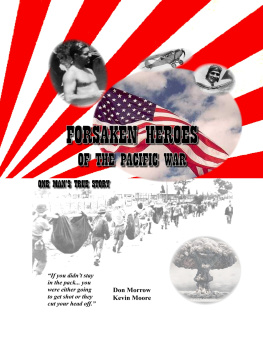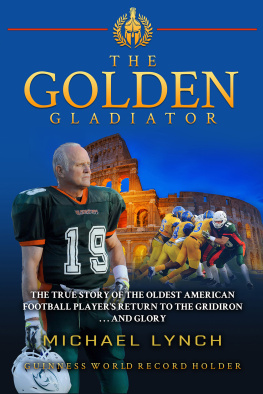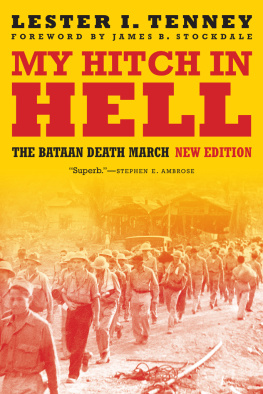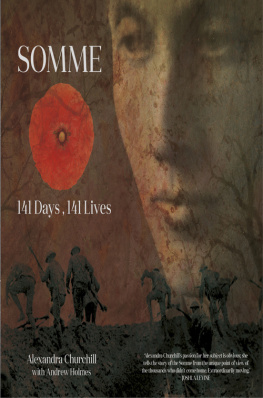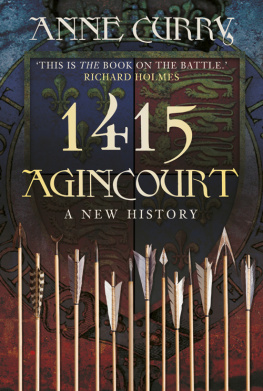Forsaken Heroes of the Pacific War
One Man's True Story
Don Morrow and Kevin Moore
Copyright 2010 by The Bedford Group
All rights reserved. No part of this publication may be reproduced, stored in a retrieval system, or transmitted, in any form or by any means, electronic, mechanical, photocopying, recording, or otherwise, without the written prior permission of the author.
ISBN: 978-1-938008-55-9
Forsaken Heroes of the Pacific War
The Bataan Death March - One Mans True Story
By Don Morrow & Kevin Moore
Authors Biographies
Don Morrow
A World War II veteran and longtime resident of Danbury, CT, Don is a nationally known voice actor with more than 60 years in show business behind the microphone and in front of the camera. Hes been a news announcer, called the Voice of God, behind Broadways Little Shop of Horrors, performed many of radio and televisions most memorable ads and some of Hollywoods greatest film trailers, including Saving Private Ryan, Titanic and Clint Eastwood classics. His long-time friendship with Doc Brown began in Hollywood back in the 1980s.
Kevin Moore
A principal at Moore Communications & Associates in Danbury, CT, Kevin is a public relations professional with 20 years in the business, both corporate and consulting. An avid history buff, he is a videographer for the Veterans History Project, a national initiative commissioned by Congress to capture video interviews of U.S. veterans wartime experiences. He is a graduate of Georgetown University where he studied Government and American History. Kevin lives in Danbury with his wife and four children.
Foreword
From the bestseller, Tears in the Darkness, by Michael and Elizabeth Norman How was the army to defend the indefensible, and how could commanders convince their men to hold out for help when these commanders knew well that help would never come?
Chapter 1
Flashback
Two GIs pull him to his feet as he grabs for his butt where the Japanese bayonet draws blood. Hes been napping in the dirt of a Philippine road for less than ten minutes. As his mind tries to adjust, the guard turns to jab at another American soldier. Captain Al Browns instinct is to jump on the little bastard and strangle him, but his two companions drag him back into line with the rest of the bedraggled column.
Any resistance meets with instant death by bayonet, sword or gun. The Japanese have no respect for the surrendered American and Filipino soldiers. To the Japanese, suicide is the only alternative to dying in battle. To surrender is to be a coward.
This is the peninsula of Bataan, Philippine Islands, April, 1942, four months since the attack on Pearl Harbor. Captain Albert Neir Brown is one of some 75,000 to 90,000 American and Filipino soldiers who have been forced to lay down their weapons by order of General Edward King.
The ordeal facing them will become known as the infamous Bataan Death March, a 70 mile trek to hell. It will be three and a half years before Al Brown draws a breath of freedom.
He and those who survive will undergo the most brutal treatment and conditions ever inflicted by man in modern warfare. The Japanese will abuse their prisoners minds and bodies to the breaking point and beyond. These Americans and Filipinos will be starved, beaten and murdered to an extent never before known. They will become victims of horrible diseases, many never to recover.
Chapter 2
The Journal
During three and a half years in Japanese captivity, memories of North Platte, his mother and father, Council Bluffs, wife Helen and the kids, seemed at times to Al Brown, a fading memory of somebody elses life. Yet, these images for him and similar ones for his fellow prisoners were the only thing they had to sustain them through the helplessness and isolation, the sicknesses and brutality they would endure.
Officially certified as the oldest living survivor of the Bataan Death March, Al was asked by so many people how he could live as long as he had, given all that he experienced. People have asked him how he survived his years in captivity when so many others did not. He had no real answer except to attribute it to a Good Lord and good genes
Or, as he said, Maybe just plain good luck!
Revisiting his journal a Philippine childs simple elementary school notepad, hidden most of the time during captivity in the inner lining of his G.I. Musette Bag Al came closer to some level of understanding. He never fully understood why he survived while others did not.
One things for damn sure, he said, It wasnt from overeating.
The pages of his journal tell us he somehow kept alive a sense of hope, some sliver of optimism.
Journal Entry:
I have always believed that the mind has such a positive influence over the body that if you can keep it working, you can arrest the progress of any disease certainly long enough for the other forces of the body to come to its aid.
As an ROTC member in high school and college, in 1937 the U.S. Army called Al to report to Fort Snelling in Minnesota, as war clouds were forming. For a man of 32, he had already lived a full life by even todays comparisons. Men half his age were joining up because of the Depression. He was married, a dentist with a growing ten-year old practice and the father of three children. He had captained his high school and college sports teams, barnstormed the region with a first rate basketball team even beating the fabled Harlem Globetrotters started a small airline, then got a pilots license after only four hours of training, bought his first home, bought a second plane, and was surviving the Great Depression. At 32, Al Brown had already seen a lot of life, but he had no idea how much more hed live to see.
Chapter 3
The Early Years
Speedo! Speedo! shouts the Japanese guard, jabbing his bayonet at Als butt. Blood runs down his leg soaking his boot. He re-joins the soldiers as they stagger on in the blistering heat. Now, at a quicker pace, hes determined never to fall behind again. Several yards in front of him, Al sees a Japanese officer pull a faltering soldier out of line. With an ugly shove, the officer forces the soldier to his knees, draws his sword and severs the Americans head. Al passes on as the body slumps to the ground and, as the head rolls forward, he realizes it was a friend from Fort Snelling. The remembrance brings tears and the horrible feeling of helplessness.

